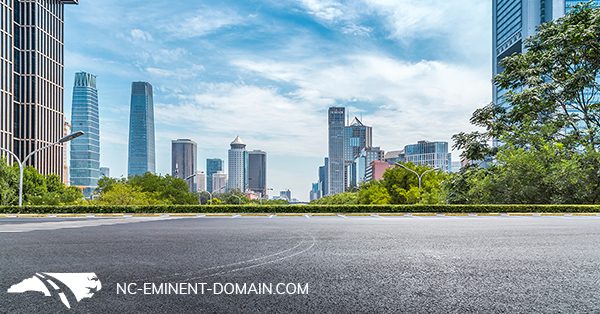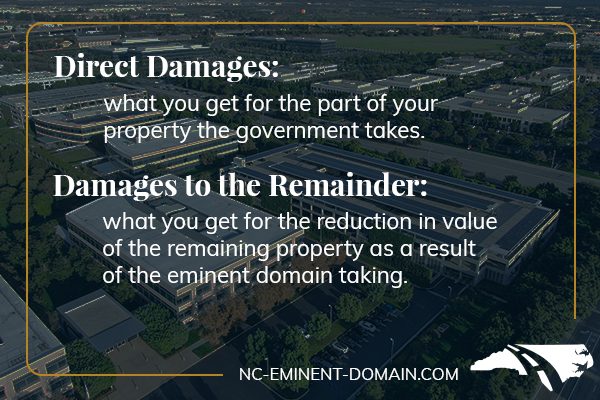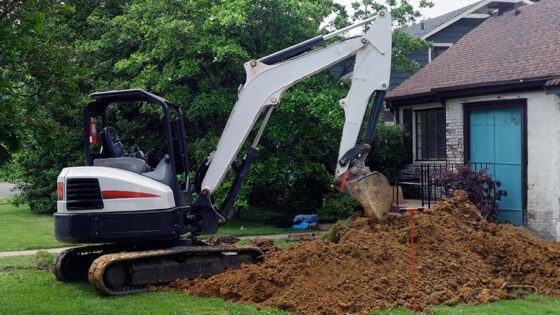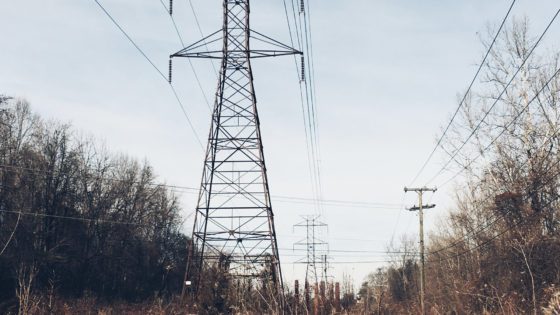
It seems like a straightforward concept, but there’s a great deal of nuance in these situations. Let me explain what you need to know, based on my years of experience as an eminent domain lawyer.
First thing’s first – find the fair value of the property being taken
Before you can obtain damages to the remainder, some part of the property must be impacted by a partial taking. During this process, the fair market value of your property must be determined, and that value depends on the highest and best use of the land (regardless of its current use).
The entire property is valued via appraisal(s), but eminent domain appraisals are a special breed. Remember that the condemning authority wants your land for the lowest possible price. They may argue they’re only taking a narrow strip of land, or taking only part of one corner, for example. They may say the taking isn’t worth much and that the remaining property will incur little or no consequential damages.
Before you believe the government’s calculation of fair value, sign anything, or take any money, contact an experienced eminent domain attorney. A free consultation could make a dramatic difference in your approach to the just compensation you may be entitled to for your land.

Seeking damages to the remainder – the decrease in the value of the remaining property
As you negotiate the value of the property being taken, you should consider the damage the partial taking has done to the value of the remaining property. Damages to the remainder are meant to compensate a property owner for the loss of the value of their remaining land. However, as damages to the remainder are calculated along with the total damage to your property, it may be hard to tell if they’ve been adequately considered without help.
After an eminent domain taking, does your remaining property have a far lower market value than it would have before the taking occurred? If so, that’s a cost to you, and you should be compensated. Here are examples of some serious impacts even a partial taking can have on your land.

The devil is in the details – loss of reasonable access
Let’s say you have a business, and the DOT decides it needs a little piece of the property. Unfortunately, that piece they need eliminates the main, easy entry to your parking lot, preventing commercial trucks from delivering inventory to your business. Losing that small piece of property may dramatically reduce the value of the commercial building on the remaining land. An attorney experienced in eminent domain can help fight for any damages to the remainder to reflect the reduced market value of your remaining property.

The literal road to nowhere – land you can’t use anymore
Imagine the DOT wants to put a stretch of Interstate Highway through your farmland. The road will bisect, or split, the property in such a way that it cannot really be farmed. The only way to access one side of your property from the other will be to drive several miles around the Interstate, effectively preventing you from using both parts together. Even though the eminent domain taking is a relatively small percentage of the property, the damage to what’s left is irrevocable. This is what happened to our clients, the Smiths. We fought to ensure damages to the remainder were fully considered as part of the just compensation, arguing that their property’s highest and best use had been taken from them.1

When the DOT brings traffic to your door
What if you own a townhome in a busy city? The city decides that it needs some of the back of your property for a six-lane road, but the project will bring traffic very close to your home – within 8-10 feet of your door. This is a form of damages to the remainder we call “proximity damages” – loss of value due to the new proximity of a road or utility to your home. But even if your home was already relatively close to the road, you may also have a case. Read how we fought for Jay when this happened to him.
What can I seek compensation for?
As a general rule, the government takes what land it needs for public use, such as a road widening, and compensates the property owner for the portion of the land it takes. Note that damages to the remainder do not include loss of business or profits – only the value of the land and buildings or improvements on it. Since some areas are considered non-compensable under North Carolina law, even mentioning such things to a right of way agent is a good way to hurt your case. The government also does not care about things like aesthetic value of improvements, a building, structures, and so on.
The government is, however, expected to pay for what it takes, and pay for the damage it does to the remaining property. It must also purchase the entire property if the remainder is damaged beyond any economic use, resulting in what’s called an “uneconomic remnant” – a property so damaged by the taking that it has no real value, such as an undevelopable or landlocked parcel.
The bottom line is that you want damages to the remainder included in the award for the harm the taking has caused the remainder of your property, not just the direct damages for the land the government takes.
You vs. the government – what can you do?
Condemnation may be a serious threat to your property’s future value and could do serious harm to your ability to use your land. Don’t accept the government’s claim of value or accept its initial offer. Agreeing to a government taking is not a patriotic duty. Based on our experience the government’s initial offer is almost always quite a bit lower than the actual value.
I recommend that you contact an experienced eminent domain attorney to review your case. And while it may be difficult or impossible to resist the taking of your land, you are entitled by law to just compensation for what the government takes – including damages to the remainder.
Talk to one of our eminent domain attorneys

We’re determined to fight for our clients to be treated fairly. It’s rarely necessary for a case to go to court, but if it does, it’s nothing new to us.
We can help you pursue maximum compensation, and our fee only comes from the amount we can secure for you above the initial offer. That means our help costs you nothing if we can’t increase your initial offer! You’re entitled to compensation – trying to ensure it’s fair compensation is why we’re here.
Call us at 1-877-393-4990 right now, or contact us online.
You may also be interested in
How to show the government your land might be worth more
What is a quick-take action in North Carolina?
What Is a Drainage Easement, and What Does It Mean for My Property?



